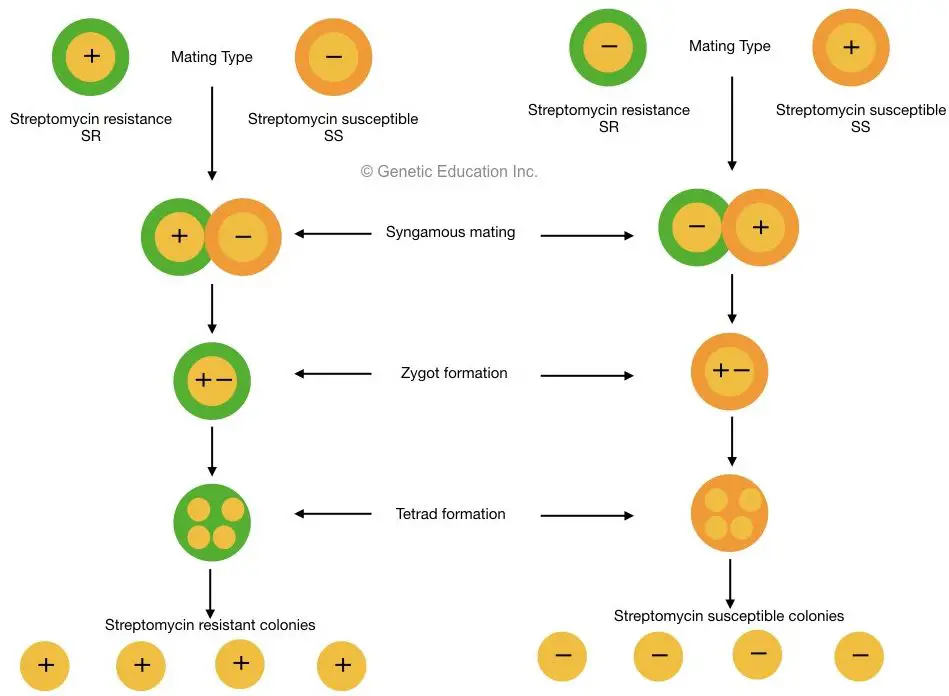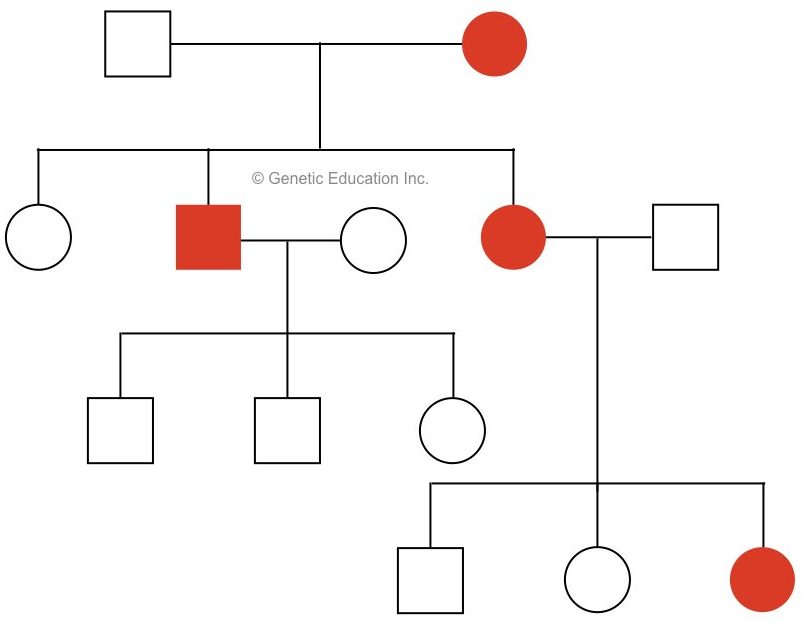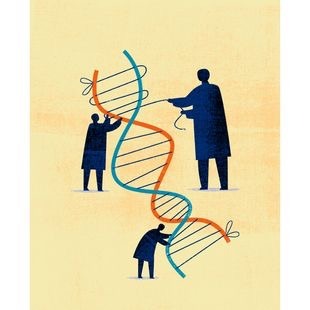“Organelle like mitochondria and chloroplast have their own genome and are known as cytoplasmic or extrachromosomal DNA. When genes are inherited from the DNA present in the cytoplasm, is known as extrachromosomal inheritance.”
We have DNA as our genetic material made up of sugar, phosphate and nitrogenous bases. The function of DNA is to manufacture protein by storing, processing and transferring information. The whole set of DNA is named as ‘genome’ which is located in the cell nucleus.
All DNA has located on chromosomes. A functional piece of DNA is known as a ‘gene’ which is only the 3% part, while the rest of the DNA is noncoding, meaning, doesn’t form protein. Genotype governs every phenotype of us. Genotypes are inherited through either autosomal or sex-linked inheritance.
Importantly, recent studies also evident that several genes are present outside our cell nucleus. Some are present in cytoplasmic organelles like mitochondria and chloroplast while some DNA is floating freely in the cytoplasm.
Denoted as the “organelle DNA”, non-nuclear DNA has several important genes that have been assigned for specific phenotypes, significantly. studies also show that mutation in cytoplasmic DNA also causes health-related problems to a person.
Organism to organism the importance of non-nuclear DNA varies, for example in maize it governs sterility while in paramoecium it governs the production of “paramecin” protein. We have so far discussed these things in our previous article, we also have explained several examples and mechanisms of inheritance.
In this piece of content, I am going to explain to you something very interesting related to the present topic. The plan for this content is to explain what the organelle DNA is, its types- mitochondrial & chloroplast DNA and its importance.
Read more: Mitochondrial DNA vs Nuclear DNA- Differences and Similarities.
Key Topics:
What is organelle DNA?
When DNA is present in cell organelle, is known as organelle DNA. Organelles are part of a cell present in the cytoplasm. Mitochondria, Golgi body, chloroplast and endoplasmic reticulum, etc are organelle present in a cell. Among these mitochondria and chloroplast have their own DNA, and replication machinery to copy it.
Cytoplasmic DNA is present in membrane-bounded organelles inside the cell. Chloroplast and mitochondria are the most common organelles having their own DNA. This DNA helps them synthesize their own protein molecules to perform different biological functions.
Chloroplast DNA:
Photosynthesis occurred within the chloroplast and provides an energy source to all living organisms on earth as animals can’t produce their own food.
Carl Correns is a pioneer in the discovery of non-mendelian inheritance. He observed that cytoplasmic DNA is responsible for the color difference in Mirabilis jalapa and the DNA is located in the chloroplast. DNA in the chloroplast is denoted as “cpDNA”.
‘Plastid’ is the common name used for the DNA present in the chloroplast. Some of the variegations are controlled by not only nuclear DNA but also by plastids. Variegation is different colored patches on the leaves of the plant.
The chloroplast is an organelle working dedicatedly during photosynthesis. Chlorophyll present in chloroplast help in photosynthesis and production of energy in plants by the systemic reaction of photosystem I and photosystem II.

Traditional studies show that chloroplast can synthesize protein in the presence of light or ATP, it has fully functional protein synthesis machinery. Chlorophylls, cytochrome ‘a’ & ‘b’ and other molecules are synthesized in the chloroplast.
Each chloroplast has multiple copies of DNA molecules. The copy numbers may differ in different species of plant ranging from 40 to 60 copies per chloroplast.
It was believed that chloroplast and mitochondria were free-living bacteria. Evidently, some of the drug-resistant genes are found on chloroplast DNA. Ruth Sager’s experiment explains things well.
Ruth Sager’s experiment:
Ruth Sager has experimented on Chlamydomonas algae and concluded that 10% of antibiotic resistance genes are located on chloroplast DNA.
When Chlamydomonas algae cells are cultured on streptomycin-rich media. Almost all cells are killed but one in some million cells are developed resistance and survived. By experimenting repeatedly, he created streptomycin-resistant algae cells. 90% of resistant mutants involved nuclear genes but 10% is, however, created by genes located in the cytoplasm.
It is presumed that this 10% of genes are located in chloroplast and have a non-chromosomal uniparental inheritance. Reciprocal crosses between two mating-type + and – indicate that,
When the mating-type + is resistant, then all the progenies developed resistance and when this + mating type is susceptible, all the colonies become susceptible. The result indicates that the inheritance of non-chromosomal DNA is controlled by the maternal side and also by a nuclear gene.

In higher plants the cpDNA ranges in size from 120 to 160 kb. Though all the chloroplast DNAs are circular in nature, some species of algae contain linear cpDNA. All the genes present in cpDNA are almost the same in all organisms. Majorly, cpDNA is grouped into two broad categories:
- Genes that encoded for protein synthesis machinery: As we said, chloroplast has its own synthesis machinery and genes for tRNA, RNA polymerase subunits, elements of translation and for encoding other proteins.
- Genes that are encoded for a specific component of photosystems: Component of Protein involves in photosystems I and II are encoded by genes present in the chloroplast, furthermore, chlorophyll encoding genes are present on cpDNA.
With the help of their own protein synthesis machinery chloroplast synthesize their own protein and by using this molecule in photosynthesis they can create food of their own. Animals lack chloroplast and genes to encode chlorophylls that’s why they can’t make their own food.
Researchers believe that “it was the photosynthetic bacteria which were localized in plant cells and symbiotically gave them the power to make food.”
Mitochondrial DNA
Mitochondria is a membrane-bounded organelle present in eukaryotic cells (not present in prokaryotes). It is believed that mitochondria were small moving bacteria in their previous life and symbiotically situated in the cytoplasm of eukaryotic cells.
Mitochondria provide energy to cells in the form of ATP, both in plants and animals. The process of oxidative phosphorylation and fatty acid synthesis generates ATP molecules which are the main energy form for all biological reactions.

Since evolution, it contains unique circular DNA molecules which code for a small number of proteins. Much like chloroplast, mitochondria have their own protein synthesis unit. It has specific tRNA, aminoacyl tRNA synthetases, ribosome and mRNA genes present in their sub-genome.
Mutational changes in mitochondrial DNA lead to heritable alterations in an organism. Notedly, genes encoding several proteins which are involved in the replication of mtRNA are located in the nuclear DNA, meaning, it is present in the genome but not in the mitochondrial sub-genome.
The genome of mitochondria is smaller and circular and contains only a few genes, ranging from 16kb to 100kb in multiple copies as like cpDNA. However, unlike cpDNA, several mtDNA sequences are conserved in animals from evolution.
Besides, mitochondrial DNA has a few unique properties which haven’t present in nuclear DNA. For example, using a single promoter the whole DNA gets transcribed. After that endonuclease cleaves the whole transcript into individual fragments to make tRNA, rRNA and mRNA.
We can say it’s more or less similar to the trp and lac Operon model of bacteria.
Research evidence suggests that the mitochondrial DNA and mitochondria are similar to bacterial DNA and bacteria, respectively. Here are some shreds of evidence.
- Both transcribed whole DNA into a single unit using a single promoter region.
- Both have circular DNA.
- Both have almost same-sized rRNA genes, however, it is smaller than the eukaryotic nuclear rRNA gene.
- Both have similar protein synthesis processes.
- The membrane of mitochondria is similar to the bacterial cell membrane.
- Both can synthesize energy-rich molecules and can produce energy.
The above facts support that the mitochondria might be evolved from the bacteria, previously.
Yet another fascinating fact about mtDNA is that several proteins involved in ATP synthesis are synthesized by the nuclear DNA instead of mtDNA. For instance, the cytochrome oxidase enzyme. The enzyme has an important role in oxidative phosphorylation that occurs in mitochondria and is encoded by a nuclear gene.
In summary, the process that occurs in mitochondria, involving various proteins is governed by both mtRNA and nuclear DNA. And due to this reason, the inheritance pattern is complex and non-mendelian. Mitochondrial DNA has maternal inheritance, meaning, it comes from the maternal side or mother.
The possible inheritance pattern is shown in the figure below,

As the mechanism of inheritance is complex, disorders that occur are also complex in nature. Scientists have discovered mtDNA’s role in many complex conditions.
Muscle weakness and muscle discoordination, poor growth, visual and hearing loss, autism spectrum disorders, heart, liver & kidney problems, learning & developmental disability, and neurological, adrenal and thyroid gland defects are some of the common problems associated with the mtDNA mutations.
Several well-studied disorders are congenital hearing loss, cytochrome C oxidase deficiency, ataxia, Leigh syndrome, Pearson syndrome and creatine deficiency syndrome.
Now in the last segment of this article, we have compared the sub-genome of both well-studied cytoplasmic organelle DNA and nuclear DNA. Here it is,
| Property | Nuclear DNA | mtDNA | cpDNA |
| Arrangement | The double helix and noncircular | Circular | Circular or linear |
| Copy | 2 copies one on each chromosome | ~10 to 100 copies per mitochondria | ~40 to 60 copies per chloroplast |
| Inheritance | Mendelian | Non-Mendelian/ maternal | Non-Mendelian |
| Nuclear envelope | Present | Absent bounded in mitochondrial membrane | Absent |
| Location | Located on the chromosome and packed into chromatins | Circular and does not arrange on chromatin | Circular or linear and does not arrange on chromatin |
| Size | More than 3 billion base pairs | ~16kb to 100kb | ~120 to 160 kb |
Wrapping up:
Extrachromosomal DNA is as important as nuclear DNA, however, possesses fewer genes. The genome of both organelles has a few thousand base pairs, mostly circular and their own machinery for protein synthesis.
Conclusively, organelle DNA follows a non-Mendelian inheritance pattern, governs several phenotypes, has a varied number of copies per cell and possesses vital genes. However, the chloroplast isn’t present in animals. One important thing we should know is that the DNA of the sub-genome isn’t included in the whole genome or when we count the whole genome.



